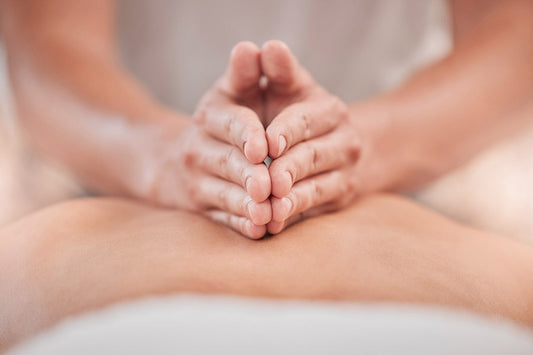Collection: Swedish Relaxation Massage
-
Swedish Massage - 120 Minutes By Jennifer Heideman, LMT
Vendor:Jennifer Heideman, LMT #24576Regular price $230.00Regular priceUnit price / per -
Swedish Massage - 90 Minutes By Jennifer Heideman, LMT
Vendor:Jennifer Heideman, LMT #24576Regular price $175.00Regular priceUnit price / per -
Swedish Massage - 60 Minutes By Jennifer Heideman, LMT
Vendor:Jennifer Heideman, LMT #24576Regular price $120.00Regular priceUnit price / per
Swedish Massage
Swedish Massage: An In-Depth Exploration
Introduction
Monarch Massage Therapy is pleased to offer Swedish massage, one of the most widely practiced and recognized forms of massage therapy. Swedish massage is known for its gentle, relaxing techniques that promote overall well-being. Developed in the early 19th century, this modality utilizes a variety of strokes to improve circulation, relieve muscle tension, and enhance relaxation. Swedish massage is highly regarded for its therapeutic benefits, making it a cornerstone in both spa and clinical settings.
Historical Background
Swedish massage originated with Per Henrik Ling, a Swedish physiologist, who developed a system of therapeutic exercises and movements in the early 1800s. His work laid the foundation for what would later become Swedish massage, incorporating elements of gymnastics, physiology, and manual therapy. Johan Georg Mezger, a Dutch physician, further refined these techniques and popularized the use of specific strokes, which are now fundamental to Swedish massage.
Anatomy and Physiology
Swedish massage targets the musculoskeletal system and the circulatory system, impacting several key anatomical and physiological aspects:
- Muscles: Swedish massage techniques work on superficial and deep muscle layers to relieve tension, enhance flexibility, and improve muscle tone.
- Circulatory System: The strokes used in Swedish massage stimulate blood flow, improving oxygen and nutrient delivery to tissues and aiding in the removal of metabolic waste.
- Nervous System: The calming effects of Swedish massage can reduce stress and promote relaxation by influencing the parasympathetic nervous system.
Mechanism of Swedish Massage
Swedish massage employs five primary strokes, each serving specific therapeutic purposes:
- Effleurage (Gliding Strokes): Long, sweeping strokes that warm up the muscle tissue, increase circulation, and promote relaxation.
- Petrissage (Kneading): Rhythmic lifting, squeezing, and releasing of muscles to enhance deeper circulation and break down adhesions.
- Friction: Deep circular or transverse movements that target specific muscle fibers, breaking down scar tissue and adhesions.
- Tapotement (Percussion): Rapid, rhythmic tapping, cupping, or hacking movements that stimulate the muscles and nervous system.
- Vibration: Fine, rapid shaking movements that help to relax and soothe the muscles.
Clinical Benefits
Swedish massage offers a range of therapeutic benefits, validated by clinical research and practice:
- Pain Relief: Effective in reducing chronic pain, muscle soreness, and tension headaches.
- Improved Circulation: Enhances blood and lymph flow, supporting tissue health and immune function.
- Stress Reduction: Lowers cortisol levels and promotes a sense of well-being, aiding in the management of anxiety and depression.
- Enhanced Flexibility: Increases muscle elasticity and joint mobility, benefiting overall physical function.
- Postoperative Recovery: Assists in the recovery process by reducing pain and swelling, and improving circulation.
Professionalism in Swedish Massage
Swedish massage requires a high level of professionalism, encompassing both technical skill and ethical practice:
- Education and Training: Professional massage therapists undergo rigorous training programs, including anatomy, physiology, pathology, and hands-on techniques.
- Licensure and Certification: Therapists are often required to obtain state or national certification, demonstrating their competence and adherence to professional standards.
- Ethical Practice: Adhering to a strict code of ethics, therapists ensure client safety, privacy, and respect, maintaining a professional and therapeutic environment.
- Client Assessment: A thorough assessment of the client's health history, needs, and preferences is conducted to tailor the massage session accordingly.
Techniques and Approaches
Swedish massage incorporates various techniques to address different therapeutic goals:
- Classic Swedish Massage: Focuses on relaxation and stress relief using the five primary strokes.
- Therapeutic Swedish Massage: Combines Swedish techniques with deeper pressure and specific therapeutic goals, such as pain relief or injury recovery.
- Sports Massage: Integrates Swedish massage with techniques targeting athletes, aiming to enhance performance, prevent injuries, and aid recovery.
- Medical Massage: Uses Swedish massage techniques as part of a treatment plan for medical conditions, under the guidance of healthcare providers.
Use of Lotion in Swedish Massage
Lotion or oil is used in Swedish massage for several important reasons:
- Reduced Friction: Facilitates smooth, gliding strokes without causing skin irritation.
- Comfort and Relaxation: Enhances the overall massage experience by providing a soothing and comfortable touch.
- Skin Hydration: Moisturizes the skin, leaving it soft and supple after the massage.
Evidence-Based Research
Research supports the therapeutic benefits of Swedish massage. A study published in the International Journal of Preventive Medicine in 2014 found that Swedish massage significantly reduced blood pressure and heart rate in hypertensive patients, demonstrating its cardiovascular benefits. Another study in the Journal of Alternative and Complementary Medicine in 2010 reported significant improvements in anxiety and depression symptoms among participants receiving regular Swedish massage.
Conclusion
Swedish massage is a highly effective and professional therapeutic modality, offering a range of benefits from pain relief and improved circulation to stress reduction and enhanced flexibility. Its techniques, developed and refined over centuries, have stood the test of time, making Swedish massage a foundational practice in the field of massage therapy.
For individuals seeking to improve their physical and mental well-being, Swedish massage provides a safe, effective, and scientifically validated treatment option. With its emphasis on professionalism and therapeutic outcomes, Swedish massage remains a vital component of holistic health and wellness practices.




